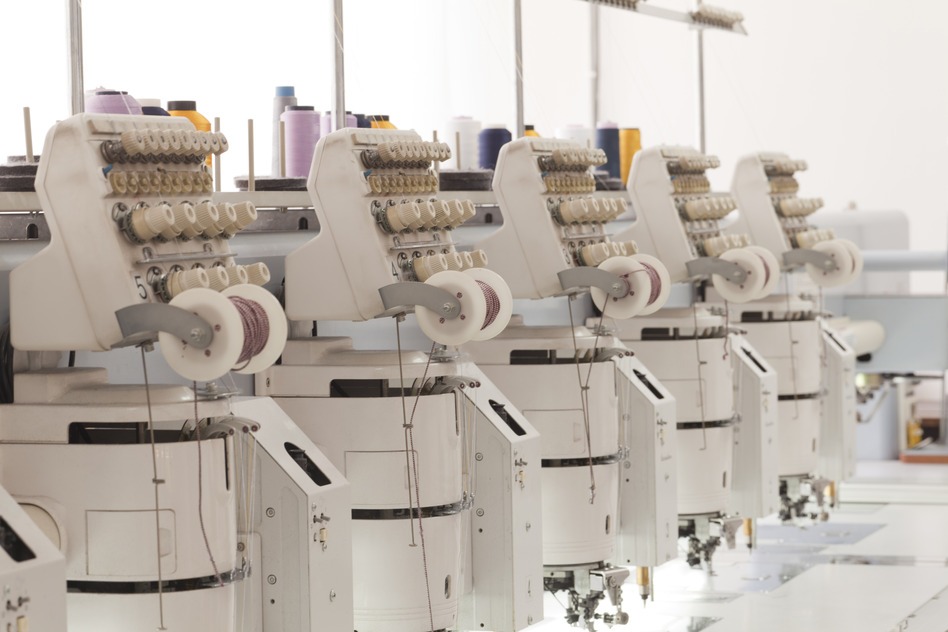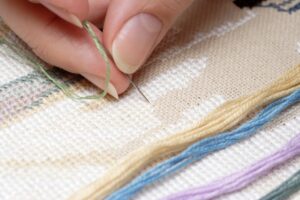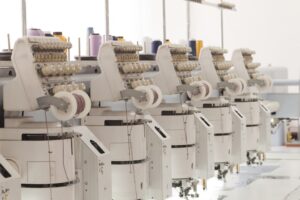History of Embroidery

The Origin, History, and Development of Embroidery
Embroidery is the technique of sewing a design, usually over a base fabric. It was likely first developed as a natural extension of sewing clothes, as people soon discovered that extra thread not only reinforced or patched the fabric but could be decorative as well. This led to the origin of embroidery and one of the first forms of decorated apparel.
Like many early inventions, the origin of embroidery came from ancient China in about the 5th-3rd century B.C. Soon, the Chinese were using silk thread, beads, and even precious stones in their designs.
Artwork from the period indicates the early ancient Greeks wore embroidered clothes, although no actual samples survive. Later, the upper-class Syrians, Babylonians, and Romans wore embroidered apparel.
The history and development of embroidery reached a high level of art during the Middle Ages in England. There, craftsmen developed elaborate techniques including Opus Anglicanum, and produced the famous Bayeux Tapestry, which tells the story of the Norman invasion of England (from the Normans’ point of view, of course), providing historians valuable information on that event. Much embroidery was produced for religious or state purposes and included decorative hangings as well as clothes.
Embroidery went into a period of decline briefly in the late Middle Ages but came back by the Elizabethan period in England, promoted by a new interest in secular art by the elites of the day and by new materials and techniques imported from China, India, and other parts of the Far East. After another brief slump in quality during the 1600s, embroidery came back again as an art form in the 1700s. Furniture, costumes, and wall decor all got the treatment.
The Industrial Revolution abruptly changed the history of embroidery. The machine loom’s mass-produced, undecorated cloth replaced the painstaking by-hand craft of embroidery. Women started doing more outside the home (beginning with early industrialism’s indiscriminate use of men, women, and children in the dangerous factories of the time) and so domestic crafts either disappeared or stagnated into a mere imitation of old techniques. One form of embroidery that did manage to stay popular was the sampler pattern.
Eventually, the sewing machine developed. Shortly after, freehand machine embroidery made its début. Finally, computerized embroidery developed, which is by far the most used method today.
Embroidery Today
The basic stitches, the concepts of counted-thread embroidery (like canvas work or cross-stitching) versus free embroidery (embroidery applied without regard to the underlying fabric) and much of the materials (except for those derived from petrochemicals) have all remained much the same from ancient times. The main development has been mechanizing the process.
Almost all embroidery done by decorated apparel shops is done by computer-controlled embroidery machines. They may have one needle (requiring manual changing of thread if more than one color is used for a design) or may have multiple needles, each with different threads loaded. Some can even trim and change colors automatically.
A multi-needle machine may have multiple sewing heads which can sew the same design onto several clothes at the same time. Some machines may have 20 or more heads with 15 or more needles each. Each head can produce many special effects including satin stitch embroidery, chain stitch embroidery, sequins, appliqué, and cutwork.
Most machine embroidery requires a stabilizer fabric to act as a backing so the underlayment fabric doesn’t wrinkle.
Modern machine embroidery is used to add logos and monograms to polo shirts, business shirts or jackets, gifts, and team apparel as well as to decorate household linens, draperies, and decorator fabrics that mimic the elaborate hand embroidery of the past. To learn more about the technology behind modern embroidery, check out the Evolution of Embroidery.
Shopworks OnSite was developed specifically for your embroidery needs. View our embroidery shop management software and check out all of OnSite’s features on our OnSite page.





